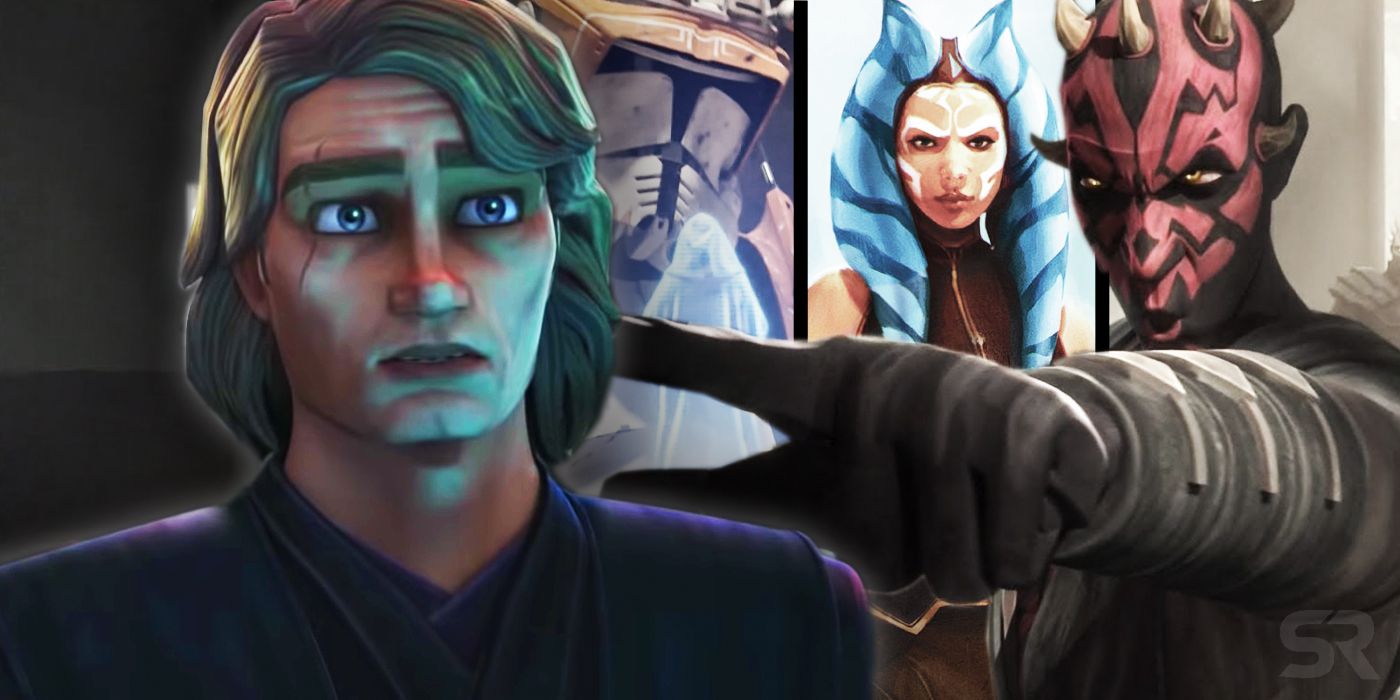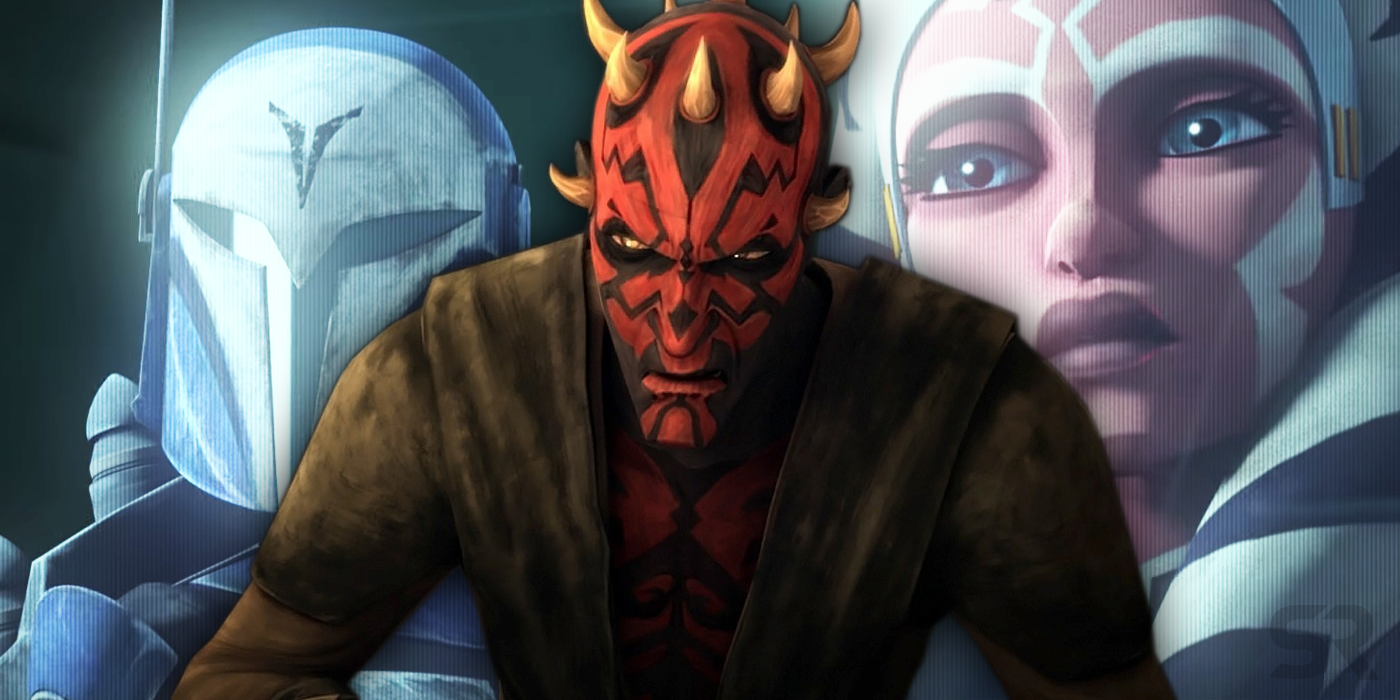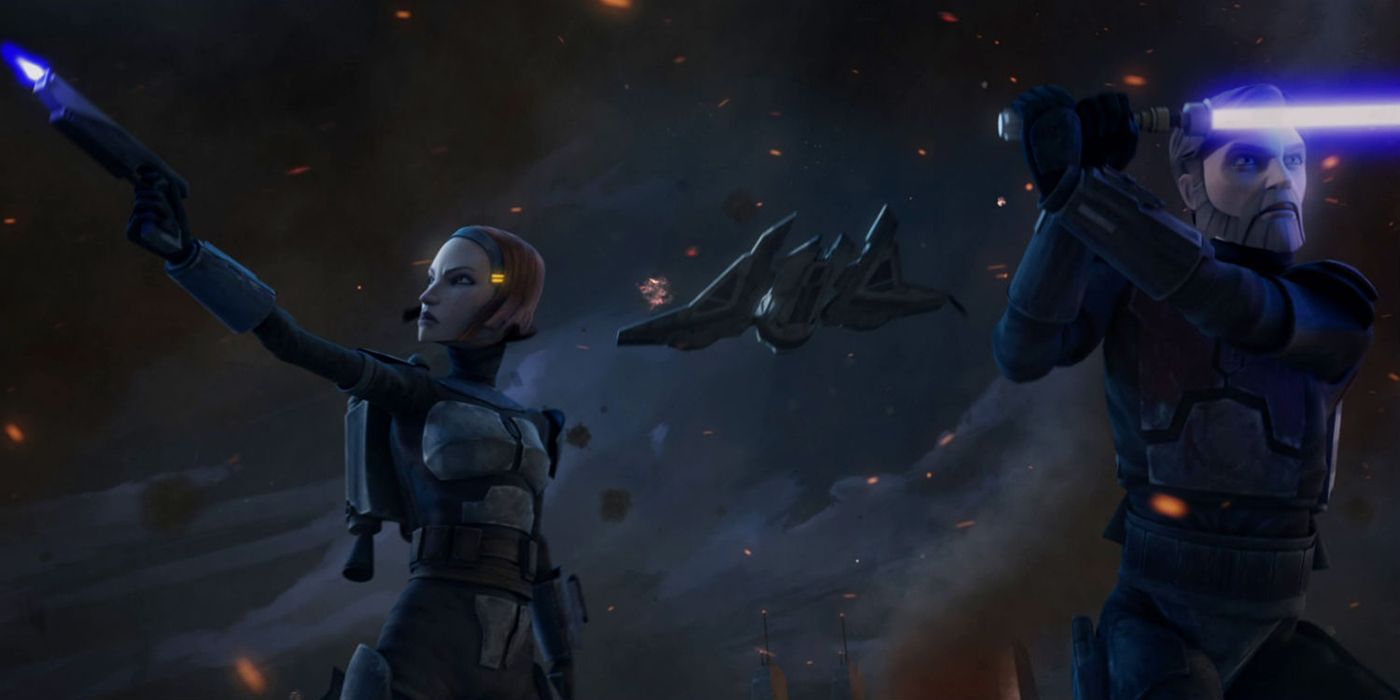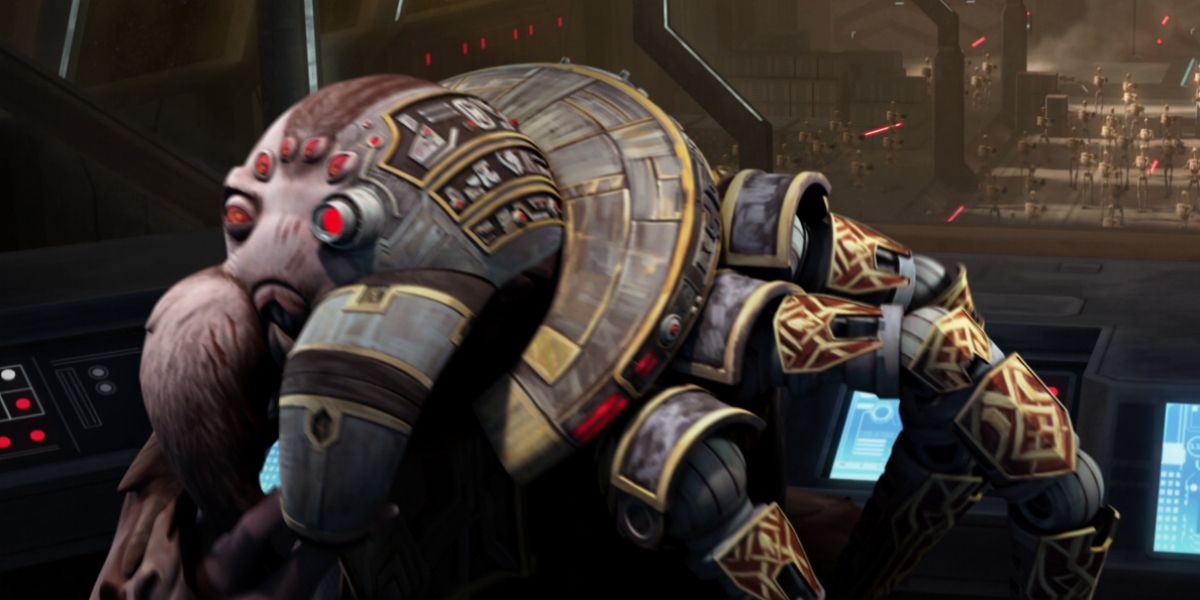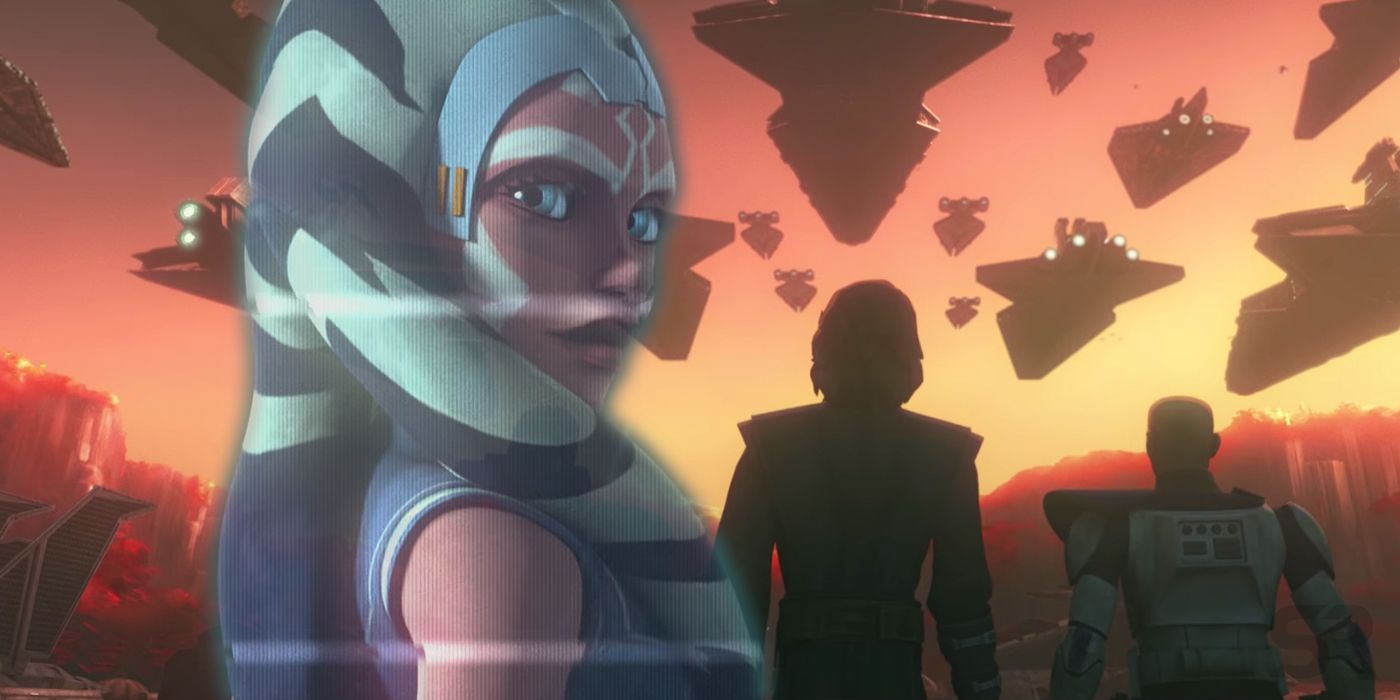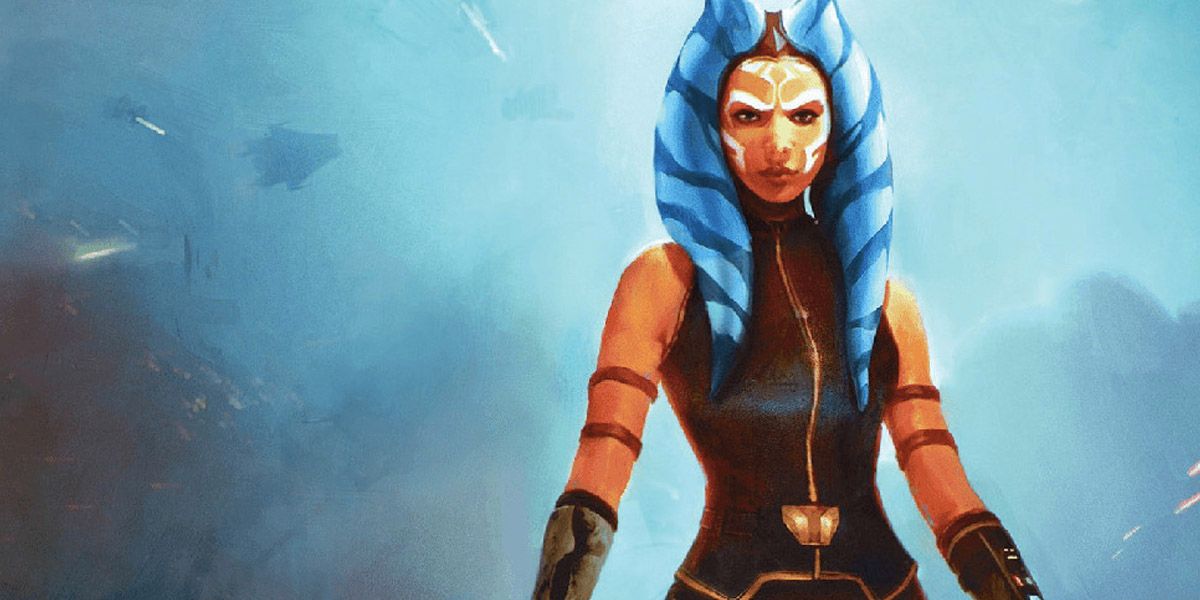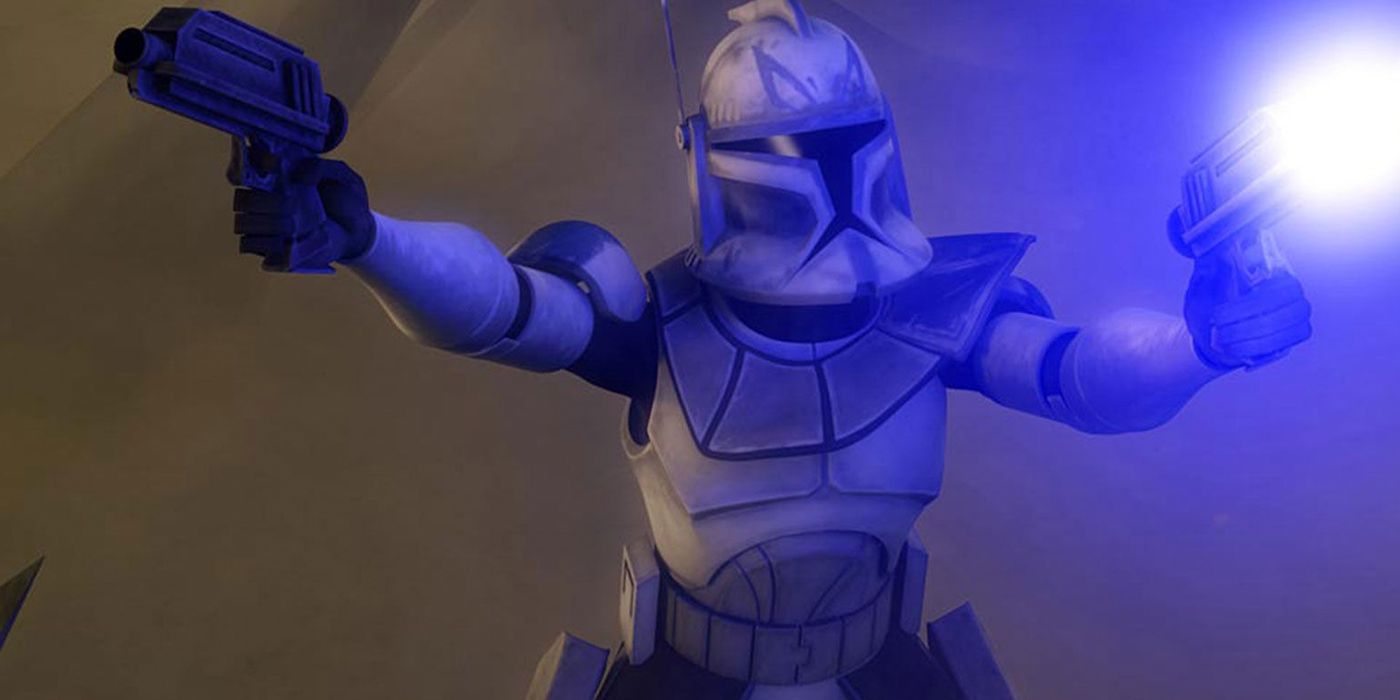The unexpected revival of Star Wars: The Clone Wars is the perfect opportunity for Lucasfilm to tie together some of the most exciting plot threads in the galaxy. Disney's decision to pull the plug on the popular animated series was arguably their first mistake after they purchased the Star Wars franchise. It's no coincidence that showrunner Dave Filoni used his next animated series, Star Wars: Rebels, to revisit a lot of characters and ideas he'd not been able to explore due to the cancellation of The Clone Wars. He knew how much viewers loved the show, and he hated leaving so many loose ends.
According to Filoni, the Clone Wars revival will finish the story. "Any opportunity to put the final pieces of the story in place is meaningful as a storyteller," Filoni explained. "I’m happy for the opportunity to define these things and the end of this part of the Clone War." It's true that the revival won't pick up exactly where the series left off; a number of season 6 adventures have already made their way into other mediums, most notably the Darth Maul: Son of Dathomir comic book and the Dark Disciple novel. Those stories are considered canon, and so Star Wars: The Clone Wars is skipping the unfinished season 6 plots and leaping straight into Filoni's plans for seasons 7 and 8.
Related: Star Wars Rebels is a Proper Conclusion to The Clone Wars
Even though there's going to be a gap, though, the whole point of this revival is to tie up loose ends. In fact, certain scenes in the trailer all-but-guarantee some of the unfinished plot points from previous seasons are going to turn up in the revival. So what do we hope to see?
- This Page: Darth Maul and the Siege of Mandalore
- Next Page: Ahsoka and Order 66
What Happened to Darth Maul Before Solo?
After an unexpected resurrection, Darth Maul became a major threat in season 5 of Star Wars: The Clone Wars, successfully conquering Mandalore and becoming head of a criminal organization known as the Shadow Collective. In truth, Maul's goal was simple revenge; he sought to avenge himself on those he believed had wronged him, namely Obi-Wan Kenobi and Darth Sidious. His plans came to a head in the season 5 episode "The Lawless," which saw the former Sith Apprentice kill the woman Obi-Wan secretly loved, Satine. Unfortunately for Maul, that triumph was shortlived; Darth Sidious sensed a disturbance in the Force and traveled to Mandalore personally. Maul was captured and tortured, with the Sith Lord noting that he still had plans for his old apprentice.
Unfortunately, Star Wars: The Clone Wars was canceled before viewers ever got to see those plans. The scripts were written, though, and Lucasfilm had them turned into the comic Darth Maul: Son of Dathomir. This revealed that Sidious allowed Maul to escape in order to get to a powerful Dathomir witch who posed a threat to the Sith's plans. It was a ruthless strategy, and it left Maul's forces crippled. Maul himself fled Dathomir in defeat - presumably returning to Mandalore. E.K. Johnston's novel Ahsoka reveals that the Republic ultimately attacked Mandalore in order to overthrow Maul's empire, but the former Sith Apprentice escaped yet again. The full battle to overthrow Maul was never shown.
In terms of Star Wars continuity, Maul's next appearance was years later - in the closing scenes of Solo: A Star Wars Story. There, viewers learned that Maul had abandoned the Shadow Collective and formed a new criminal empire, the Crimson Dawn. Did the Shadow Collective fall with Mandalore? And why did Maul start again with a brand new organization? The Clone Wars revival is the perfect chance for Lucasfilm to tie together the threads of Maul's life.
Related: The Clone Wars Revival Can Pay Off Maul's Solo Cameo
The Resistance on Mandalore and the End of the War
In "The Lawless," it was Satine's sister, Bo-Katan, who freed Obi-Wan from Maul's clutches. She sent him to the Republic in order to muster forces against Maul but remained behind to act as a key figure in a resistance movement. Curiously, although E.K. Johnston's novel tells the tale of how the Siege of Mandalore ended, it doesn't reveal the role Bo-Katan and her resistance played in the battle.
The Siege of Mandalore was essentially the last great battle of the Clone Wars, fought at the very same time as the events of Revenge of the Sith. Order 66 happened straight after the Siege had ended, with the Jedi on Mandalore (mostly) slaughtered by the Clone Troopers. These end-scenes were incorporated into Johnston's novel in order to tell the post-Revenge of the Sith story of Ahsoka. Presumably, Johnston used Filoni's notes in order to tell the tale, but there's a big difference between reading that part of the story in a book and seeing the whole thing it on the small screen.
The Fate of Admiral Trench
One small-yet-essential thread really needs to be resolved is the fate of Admiral Trench. Trench was a Separatist military leader who proved to be a real thorn in the side of the Republic. He was a recurring villain in Star Wars: The Clone Wars, overseeing the Confederate blockade of Christophsis, and leading the Battle of Ringo Vinda. Trench was ultimately killed in an unfinished episode, appropriately titled "Unfinished Business." This was part of the Bad Batch arc, and The Clone Wars trailer released at SDCC has already suggested that arc will make its way into the revived series. Hopefully, that means Trench's story will be brought to a satisfying close at last.
Page 2 of 2: The Fate of Ahsoka Tano
How Ahsoka's Departure Pushed Anakin Towards Vader
When Lucasfilm launched the Star Wars: The Clone Wars animated series in 2008, viewers were puzzled at the introduction of Anakin's new Padawan, Ahsoka Tano. After all, the character hadn't been alluded to in the actual Prequel Trilogy, so just what happened to her? Ultimately, The Clone Wars answered that question by revealing Ahsoka left the Jedi Order, disillusioned with the Jedi.
Related: Star Wars Rebels: Ahsoka's Return Explained
But the series never had the chance to explore what impact that had on her Master, Anakin Skywalker. Lucas and Filoni clearly intended it to be a major event in Anakin's life, one that caused him to begin doubting the wisdom of his Jedi Masters. In that sense, The Clone Wars planted the seeds of doubt, but viewers were never given the chance to watch the plant grow. Instead, by the time of Revenge of the Sith, those doubts and fears are in full bloom, and Anakin is dangerously easy to manipulate.
Filoni definitely intended to explore this theme; it's known his season 7 plans included a scene in which Anakin and Obi-Wan discussed the loss of Ahsoka. Hopefully, that scene will make its way into the revival.
What Happened to Ahsoka After Leaving the Jedi
The cancellation of The Clone Wars leaves a strange gap in the story of Ahsoka's life. Although Ahsoka left the Jedi Order, the next time she's seen is in the Ahsoka novel, which kicked off with her commanding the 501st in the Siege of Mandalore. What happened to her after she left the Jedi? How did Ahsoka get drawn back into the Clone Wars? And why was she focused on the Siege of Mandalore? At the moment, the canon is essentially silent about this.
The Clone Wars revival trailer and poster both point to the Siege of Mandalore: the trailer reveals Ahsoka allies with Bo-Katan and contacts her old Master; while the Clone Trooper helmet in the poster is painted in Ahsoka's honor, something that happened at the Siege of Mandalore. These are some questions that will surely be integral to the new season.
Related: Mandalorian History & Politics Explained
Rex, Wolffe, and Gregor Escape Order 66
Star Wars: The Clone Wars revealed the truth behind Palpatine's Order 66; that the Sith Lord had ensured bio-chips were implanted inside the heads of every Clone Trooper. Order 66 triggered these bio-chips, rewriting the clones' mental programming and turning them into the perfect assassins. All over the galaxy, Jedi were gunned down by the soldiers they'd been fighting alongside only moments ago. On Mandalore, Ahsoka too was a target.
But three of Ahsoka's closest friends had discovered the threat of Order 66. Rex, Wolffe, and Gregor had all disabled their bio-chips, meaning they were able to rebel against it and ensure Ahsoka escaped. That story, too, is told in Johnston's novel. What the book doesn't explain, though, is just how these three Clone Troopers learned about the bio-chips, let alone how they disabled them.
It seems likely it was a result of events in The Clone Wars season 6, which streamed on Netflix. The first episode, "The Unknown," saw a single Clone Trooper's bio-chip malfunction. As a result, the trooper murdered his Jedi General, and wound up under investigation. Sidious, of course, manipulated events to conceal the truth and had him killed lest the Jedi work out what was going on. Unfortunately for the Sith Lord, one of the 501st - Fives - correctly deduced the truth. He confronted Palpatine, but was framed and killed; Sidious persuaded the Jedi that these two clones had been driven insane by some kind of clone virus.
Throwaway dialogue in Star Wars: Rebels has implied that Rex and his fellows didn't believe the official story. Presumably, then, they conducted their own investigation and discovered the chips. Hopefully, we'll actually get to see that happen as part of The Clone Wars revival.

